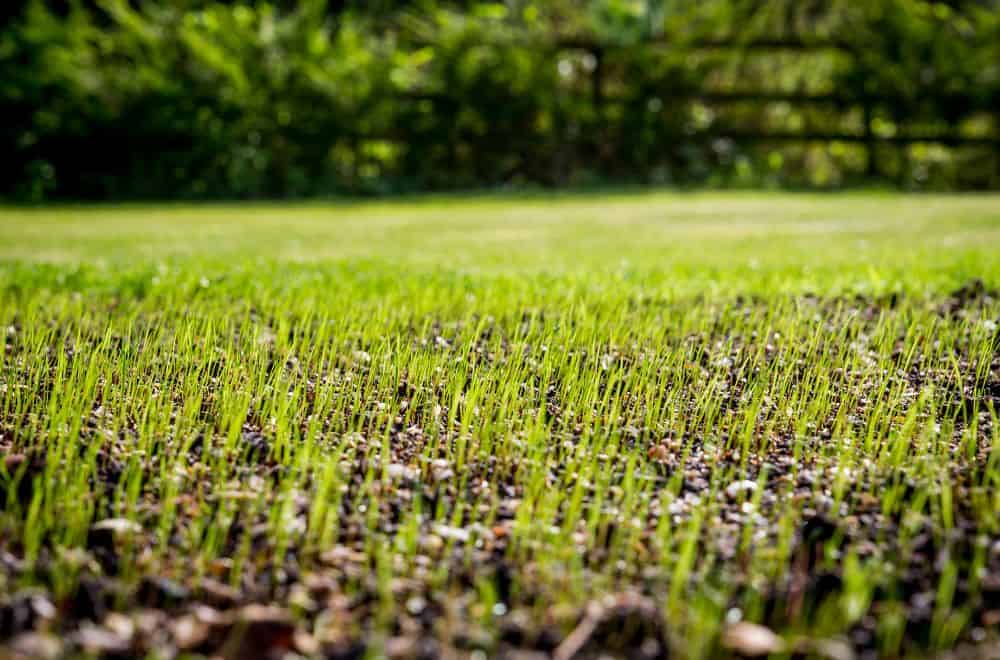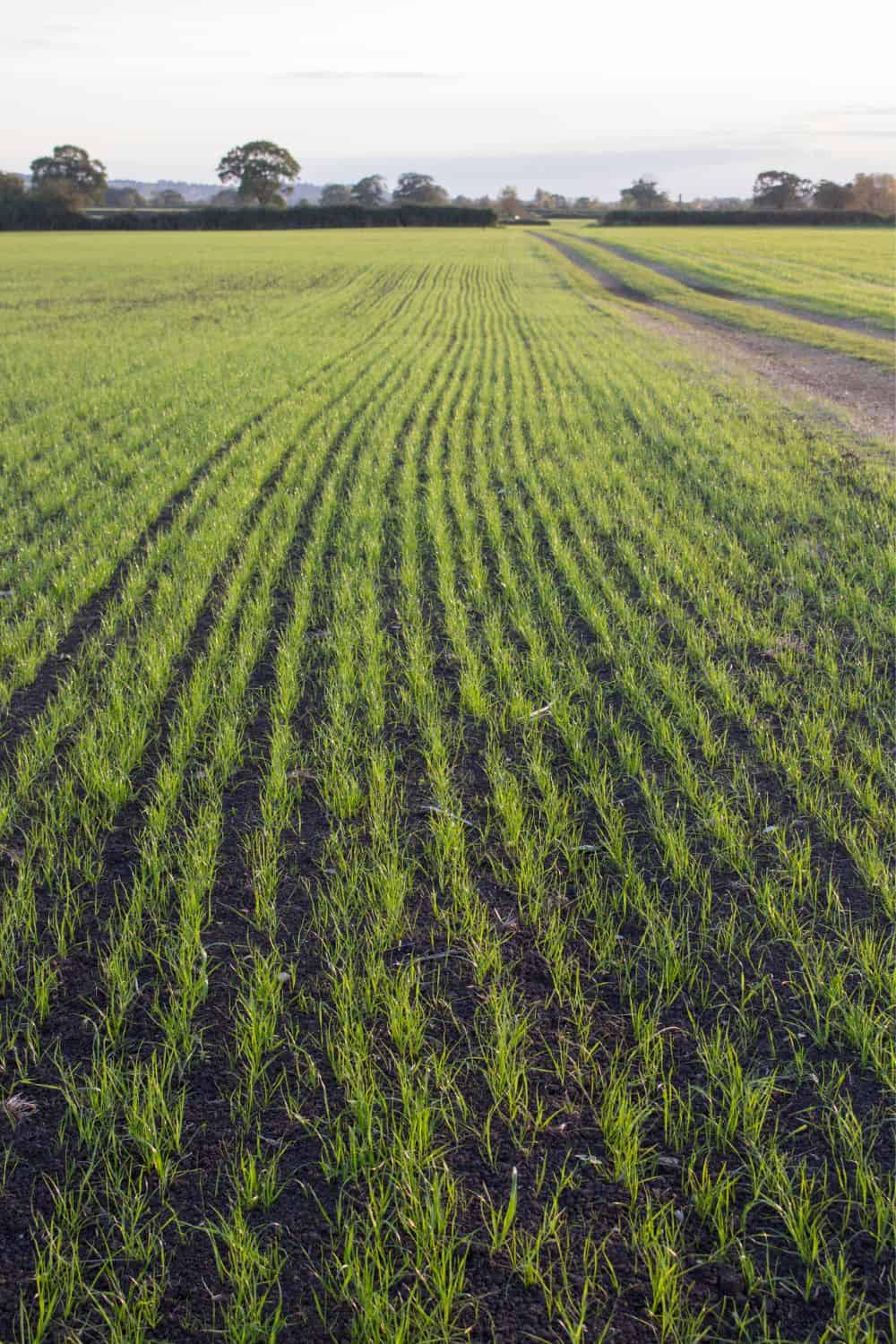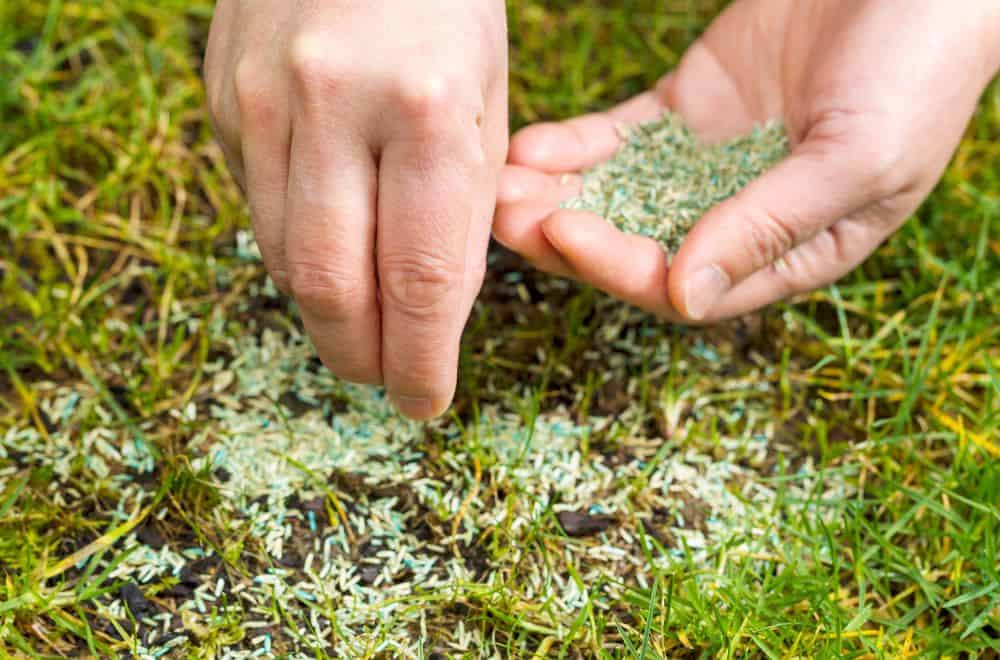If you’ve just sowed grass seeds in your lawn, you might be excited to know when you can flaunt a vivacious green lawn. Or, did you just seed empty patches, which is quite common if you’ve removed weeds, mosses recently and are worried when your lawn will look luscious again?
Whatever be the case, we’ve got you covered! Let’s dive deep and find out how long it takes for grass seed to grow, the factors that affect the growth rate, and how you can speed up the process.
How Long Does It Take for Grass Seed to Grow?
So, how long does it take for grass seeds take to grow? The answer is – it depends. Generally, grass seeds take between 7 to 30 days for germination to begin, and the germinated seeds grow at the rate of about 2-3 cm per week.
However, the type of seeds you sow, your lawn maintenance routine, the weather, moisture, sunlight, and many other factors also play a significant role in grass seeds’ growth rate.
Factors that can slow down grass germination

Every grass seed is unique and needs a different environment for its optimal growth. Various factors affect the germination of grass seeds. Here are some of the factors that are known to slow down or affect grass germination:
1. Planting wrong seeds
You should always know what type of grass seeds are best suited to the climate of the region you live in. You may also consider the internet to get the knowledge or ask the nursery experts before buying the seeds.
Try not to grow seeds not suitable to the climate forcefully as it will all be a waste of your effort and money.
2. Soil condition
You should always keep a good knowledge about the soil condition of your lawn. As the nutrients value and the soil’s alkalinity may vary from place to place, you must be careful to choose the seed types that are best suited to your soil.
It would be best if you always had your soil tested before seeding, and then you can adjust the soil by adding required fertilizers. Moreover, your soil must also be free from weed and moss, and your lawn should have proper drainage.
If any of these things lag, the seed might not grow properly. Likewise, you should also be careful while burying the seeds. The seed fails to germinate if it is buried too deep or too shallow near the surface.
3. Weather condition
The seed cannot grow properly when planted during frosty or during a very dry period. Seeds need an optimum temperature for their proper growth.
During cold springs, seed germination is delayed by a few weeks, making the seeds vulnerable to be blown away by wind or be bird feed. Likewise, if it’s a hot summer, the soil will dry out quicker, and the grass growth might be limited, and the germination rate might be quite low.
The best-suited temperature for seed germination is in the region of 8-10 degrees plus. Fluctuating and inconsistent temperatures are not optimal for grass seed growth.
To solve this issue, you can take the help of the weather forecast and start sowing the seeds on your lawn only if the optimum temperature remains constant for 2 weeks.
4. Seeding rates
Not paying enough attention to the seeding rate may also affect the growth of the seeds. Some grass may require 5 pounds of seeding per 1000 square feet, while other grass types require 10 pounds of seeding per 1000 square feet.
So, in order to prevent all these mistakes, you should carefully read the package for the actual coverage rate for the grass seeds you’ve bought.
5. Grass seed mixture
You can find the various grass seed mixtures in the market. They are the blend of the various species. Generally, they are a mixture of ryegrass and fescues, but some other special mixtures of grass seeds are also available on the market.
The growth of your grass depends on the mixture. Ryegrass grows quicker than the fescue. So, if you only want fescues, instead of a mixture, in your lawn, you have to wait longer.
6. Aftercare
Even if you have selected a good mix of seeds, sowed them in a perfect soil bed in appropriate weather, it doesn’t ensure the proper growth of the seeds. You need to take care of the grass seeds even after sowing.
Likewise, you should water your lawn as per necessity. However, remember not to leave your lawn dry or too moist, as it might result in unwanted consequences.
How to speed up grass germination

Various factors can help to speed up seed germination. Let’s go through them one by one, shall we?
1. Choose fast-growing seeds
As we all know, seed germination time also depends upon the type of seed you sow. If you’re in need of a luscious green lawn soon, buying fast-growing grass seeds might be the best decision for you.
Fast-growing seed can go from seed to turf in around five weeks. However, not all fast-growing seeds will thrive in the temperature where you live.
If the weather you live in is temperate summer or below freezing winter, cool-season fast-growing seeds might be the perfect choice for you.
On the other hand, in hot summer and milder winter zones, warm-season fast-growing seeds will best suit the environment.
2. Prepare the soil
If you want a healthy and luscious lawn, firstly, you should prepare the soil carefully. You should remove all the weeds, moss, and other debris that might affect the growth of the seeds.
Tilt the soil up to 4-6 inches and make the soil up to a fine consistency. Finally, even out the lawn level by raking the soil. An even lawn helps in quicker germination by keeping the seed in proper contact with the soil.
Moreover, ensure a proper drainage system for the lawn if you don’t want to be bothered with mosses and weeds later on.
3. Feed fertilizers and add amendments
The best way to speed up the seed germination is to feed fertilizers and add the necessary nutrients that the soil lacks for the grass seed’s proper growth.
You can test your soil to find out the type and know what necessary lawn amendments are to be made. If your soil is too acidic, adding lawn lime would ensure that your lawn favors grass growth and keeps mosses away.
It’d be better for you to take expert’s help if you’re not knowledgeable enough on what fertilizers and supplements to add to the lawn and the proper intervals between the feeding.
4. Pre-germination
For this, you need to allow the seeds to absorb the moist compost mixture for 3-4 days. Doing so will help the seeds to swell and germinate before placing them in soil.
Then, you need to dry those seeds for 12 hours and spread them on the prepared soil. Moreover, make sure that the seed makes the proper contact with the soil.
5. Mulch your lawn
Mulching your lawn can be incredibly beneficial. It locks the moisture within such that the seeds won’t dry out and germinate and grow fast and healthy. Moreover, it also ensures that the seeds aren’t washed away by rainwater or blown away by the wind.
However, remember not to mulch your lawn too thick as it might result in drainage issues and render your lawn prone to mosses. Thick mulching also blocks sunlight for the seeds. So, a thin layer is more than enough!
6. Water the seeds adequately
You should regularly water the grass seeds. The pre-germinated seeds should be slightly watered 3-4 times a day for 2-3 weeks for speedy germination.
The pre-germinated seeds are evident within 3-4 days, so it is crucial to keep them moist for proper rooting of seeds. However, remember not to water it too often as damp lawn favors moss growth.
7. Mow your lawn
Though mowing is not something that stimulates seed germination and growth rate, it is essential for maintaining the same vigor and thickness once the grass grows. Once your grass grows up to 3-4 inches, you can mow your lawn.
Typically, a lawn requires mowing every one to two weeks. However, if you have fast-growing grass species on your lawn, you might need to up the frequency.
Summary
In simple words, if you want a healthy lawn fast, all you need to do is buy the best quality fast-growing seeds that perfectly suit the climate you live in, prepare the soil adequately, sow the seeds properly, and then take good care afterward.
Along with the answer to the question – ‘How long does it take for grass seeds to grow?’, we’ve provided you with insightful information on various factors that come into play regarding grass seeds’ growth rate.
Moreover, by now, you also know how you can speed up the grass seed growth process, don’t you? If you have any queries, you know where to comment!

Leave a comment